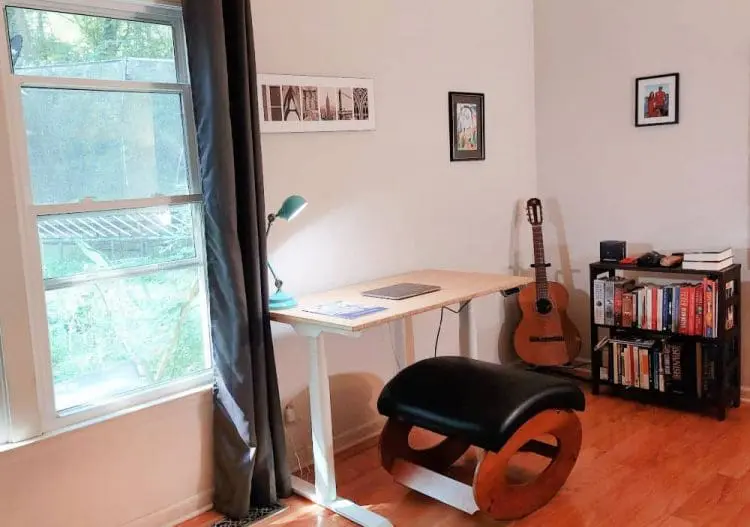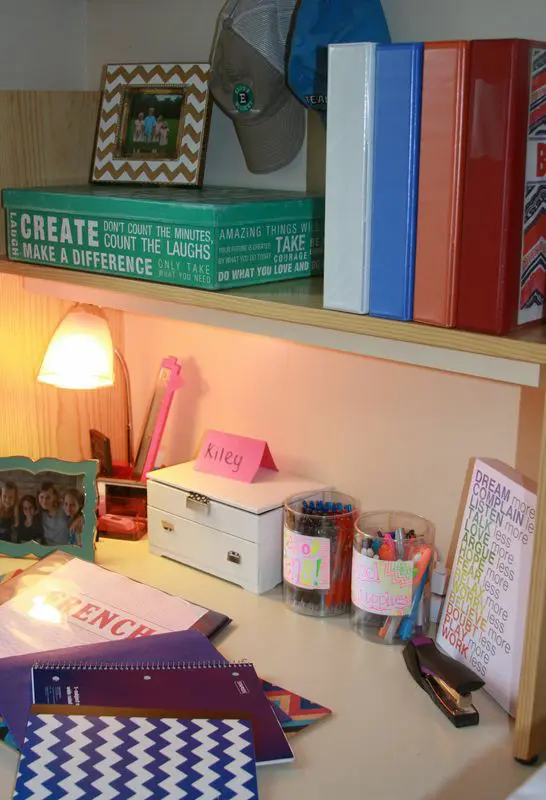School days have begun and it seems like the workloads have increased, the expectations are higher and the hours needed to maintain good grades are grueling. Today, Christa O’Leary shares with us ways to create a supportive study sanctuary designed to help your kids’ get great grades. These 5 study space ideas for kids will help set them up for school success.
Christa O’Leary, is a leading expert in home design and conscious living. As an interior designer, marriage and family therapist and eco-friendly expert, she combines this knowledge to help people live their best lives. Christa is founder and CEO of Home and Harmony Lifestyle and will be releasing her first book and radio show later this year, with Hay House Publishing, both entitled Home in Harmony: Designing an Inspired Life in which she will be exploring her Four Pillars: Inspired Home, a Healthy Body, a Calm and Clear Mind, and your Inner Light.
How To Create a Study Sanctuary For Your Kids In 5 Steps
Creating an effective and conducive study space is crucial for optimizing focus, productivity, and learning. Here are some tips for setting up an ideal study space:
1- Quiet Haven & Avoid Traffic
College kids often go to the library to study. It is a peaceful space away from the action that promotes focus and concentration (which are fundamental in getting good grades). Creating a space that supports your child’s ability to focus will help them study. Designating a space within your home that is a quiet zone during study time is ideal for optimizing good grades.
Often times I will see desks tucked into spaces that have a constant flow of foot traffic moving through the space. This is a big distraction and inhibits good study habits. Finding a spot that is in a traffic-free area will help your student focus. Remove unnecessary items and distractions from your study area. Keep your phone on silent or in another room, and only keep essential materials on your desk to avoid diverting your attention.
2- Comfortable Seating & Organized Desk
Invest in a comfortable and ergonomic chair to provide proper support and prevent discomfort during long study sessions. Ensure that the height of your desk and chair is suitable to maintain good posture.
Keep your study space well-organized. Arrange books, notebooks, and stationery in a way that is easily accessible. A clutter-free desk can help reduce stress and improve focus. Natural light is ideal, but if that’s not possible, opt for bright, cool-toned artificial lighting to reduce eye strain. Position your desk so that it receives ample light without causing glare on your study materials.

3- Away from the Bedroom
If at all possible it is better to make sure your child’s study space is somewhere other than their bedroom. We naturally associate different areas of our home with different activities. More than 85% of our behavior is habitual. We can use these instincts to help foster exemplary study habits or a good night’s sleep. But, we don’t want to confuse the two. It is important for your child’s bedroom to be associated with rest and relaxation to support a restorative environment allowing the body to be rejuvenated. Making the bedroom a study space provokes the brain to correlate the space with school pressures, which can trigger stress hormones that inhibit restful sleep.
4- Time Management Tools:
Incorporate time management tools into your study space. A clock and/or timer can help you manage your study sessions effectively and take regular breaks. Ensure that your computer or laptop is in good working condition. Keep necessary cables organized, and have a reliable internet connection to avoid disruptions. Use online tools and apps that can enhance your productivity.
5- Personalization
Personalize your study space with items that motivate and inspire you. This could include plants, motivational quotes, or pictures of loved ones. However, be mindful not to overcrowd the space with items that could be distracting.
Include in your kids study space messages that will pump up their confidence and spirit. Let them know how great you think they are! The fabulous thing about using inspired messages is that your child is unconsciously receiving these messages even when the words have faded into the background of the study space.
Color has the ability to affect our psychological and physical body. You can use colors to improve your child’s ability to get great grades. Studies have shown that the color red elevates a person’s heart rate and increases their appetite. This would hinder and distract a child from focusing on their homework. Using blue which has a calming quality or white that fosters clarity and concentration would be better. Use color to help create a study space that encourages great grades.
Conclusion
Remember that everyone’s ideal study space may vary, so it’s important to customize your study area based on your preferences and needs. Experiment with different setups until you find what works best for you.
The crisp air has arrived, football and soccer have begun and homework is in full swing. It is time to support your child’s scholastic endeavors by creating a study space that encourages optimum academic performance!
Thanks again to @HarmonyDesigner for sharing her study space tips with us. Do you think you will use these study space ideas?
Related Post:


Uplifting Families says
My kids usually end up doing their homework in their bedroom so that my younger son doesn’t bother them while they are trying to get it done.
Monica Ramos says
Thank you for this interesting and timely article. Some may argue that #1 one and #2 are a given, but it’s still very important and worth mentioning. The last two tips regarding color and inspired messages are both subject areas I cover with my coaching clients, but I love how you’ve related this to the effects on a child’s learning environment. Tip #3, however, was most interesting to me. This year my oldest son has started to do his homework in his bedroom and I have not been on him about it, and just letting it slide. I figured as long as he was getting it done that was what mattered most. Interestingly, though, he has had trouble sleeping lately. Perhaps it’s time to [re]set some boundaries.